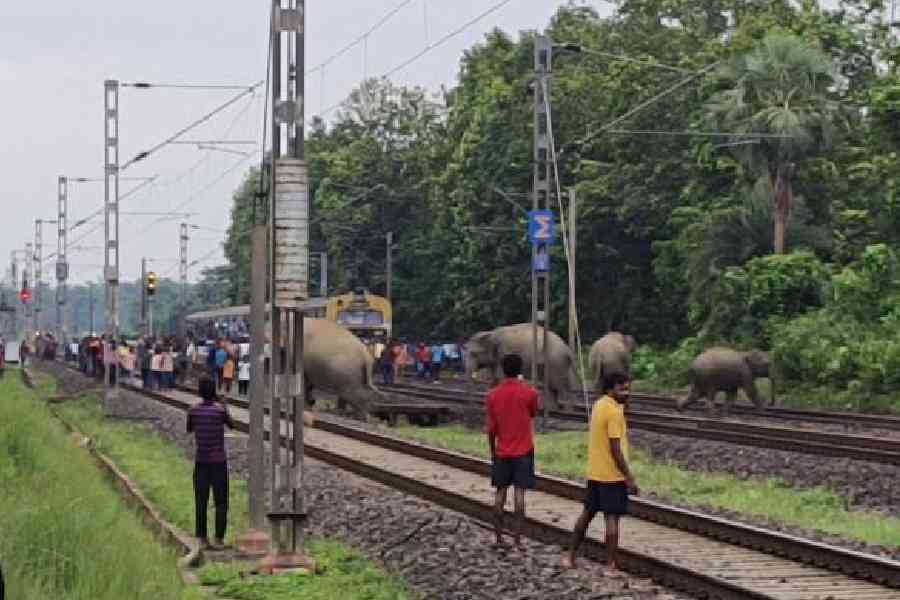Unmonitored hula parties and the lack of technology and effective coordination between different agencies led to the death of three elephants on the railway tracks in Jhargram in the small hours of Friday, wildlife experts have said.
Hula squads comprising local residents are deployed to steer jumbos away from human settlements in south Bengal. However, they have been accused of using fireballs and torches to scare the animals—practices that violate a Supreme Court order.
Since hula members get money, many unmonitored groups also jump into the fray when elephants stray into human settlements.
The forest department has denied the involvement of any hula party in the deaths on Friday.
But more than one source — local residents, NGO representatives and animal lovers — said hula party members were deployed in the area on Friday night and drove the herd towards the railway tracks.
Just before 1am on Friday, a mother and two calves were crushed by an express train that was moving at a speed of over 100kmph.
Metro has screenshots of chats in WhatsApp groups that track elephants in the forests of south Bengal. There are multiple messages, some with pictures and clips, suggesting the presence of a herd in Jhargram chased by a hula team.
This newspaper could not independently verify the authenticity of the messages.
“Past experience has shown that deploying hula parties is dangerous for the animal as well as humans” said an environmentalist who requested not to be named because he works with the forest department in more than one project.
In August 2024, one of five elephants that strayed into Jhargram town was killed after being speared by a burning iron rod, apparently by a member of a hula party comprising residents armed with searchlights, flaming torches and crackers and deployed to steer jumbos away from human settlements.
Following the death, a contempt petition was filed in the Supreme Court for alleged violation of its orders asking the state authorities to desist from using fireballs to drive elephants that come near human habitation or croplands.
The case is still sub-judice.
Advanced technology that can send real-time alerts about the presence of elephants near railway tracks is missing in south Bengal.
In north Bengal, the 160km railway link between Siliguri and Alipurduar passes through several elephant corridors.
The line was infamous for elephant deaths.
But use of sensors of varying capacities and improved communication between forest and railway officials has helped curbing the deaths in recent years.
“In north Bengal, people have burnt their fingers and learnt about conflict mitigation the hard way. That explains the proactiveness of railways, the forest department and local communities. Compared to south Bengal, the interface between railways and elephants is much more in north Bengal and Assam,” said Aritra Kshettry, national lead for elephant conservation, WWF-India, who has worked extensively in Bengal.
In north Bengal, artificial intelligence-driven sensors have a range of over 200m. An older set of sensors devised by the railways, made of optical fibres, have a shorter range.
Both are capable of sending real-time alerts to WhatsApp groups that include foresters, railway officials and members of quick-response teams.
The projects are usually funded by (corporate social responsibility) CSR.
In Jhargram, a communication was sent by a forest official to a similar WhatsApp group seeking speed curbs in the section. But it went reportedly unnoticed by railway officials in the group.
“This speaks volumes about the state of coordination between the agencies. In north Bengal, WhatsApp alerts save lives on a routine basis,” said Koustav Choudhury, ecologist and executive director of SNAP foundation, which is installing sensors in north Bengal.
A veteran forester said technology “came at a cost and took time”.
Choudhury, who is also a member of the anti-electrocution cell in Jhargram, said: “Funding is not going to be a problem if there is intent. But before everything else, hula parties must be done away with. Like north Bengal, the department should engage more trained men who know how to handle elephants with sirens, searchlights, drums and crackers.”











